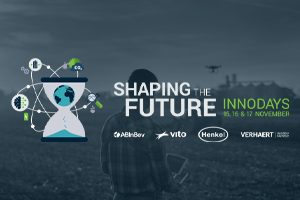Successful medical app development projects clearly benefit from defining a robust architecture and a comprehensive strategic vision and framework. They also acknowledge the importance of user validation and behavioral design, even when Covid-19 is added to the challenge.
Earlier In 2018, we published a perspective on key enablers and risks that need to be covered in order to launch a medical app. This article adds recent and concrete learnings in developing digital medical systems with our customers.
Think bigger: the importance of strategic alignment
Ideas for medical apps and connected medical devices can come from everywhere in the organization. Every concept will therefore have its own goals and context, based on where it comes from. However, digitization can transform the entire organization. Is the vision of the project ambitious enough? Is it in line with the digital strategy of the firm? Make sure that the project is aligned with the corporate strategy and that it has its spot on the innovation roadmap, to avoid unnecessary iterations or even wasted development.
For example
At a medical device manufacturer, R&D wanted the next version of a product to be controlled by an app. A project was initiated to build a basic app to connect to the device via Bluetooth. However, top management realized that such an app should be much more than a ‘remote control’. The new vision imagined the app as a platform to interact with users, support them in managing their illness, serve as a sales and marketing tool and enable a future in which the generated data is processed by AI to provide new insights, supporting users in improving their lives. In this case, the initial project (which was put on hold) can probably still be integrated. But it made very clear that innovation requires an open mind and a strategic view of what a new and potentially disruptive technology can mean for the future of the organization.
The architecture challenge
Developing an app is one thing. Building a reliable, secure and scalable system and integrating it in the existing IT infrastructure is another. As soon as the concept of a medical app becomes clear, make sure to involve a system architect and members from the IT organization to ensure that the system architecture is solid and compliant with data protection regulations as well as the organization’s IT policies. Be sure to have enough access to and visibility of the existing IT infrastructure (and how the organization envisions it in the future) and design the solution accordingly. Work visually to ensure that the project is clear to all parties involved and everyone knows their role. Again, this avoids the need for endless bug fixing in all layers of the system, redeveloping APIs or unplanned migrations in a later phase.
Download the perspective to continue reading on the importance of user validation and behavioral design.





